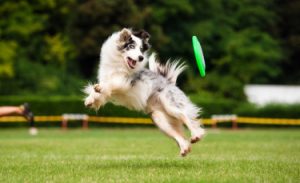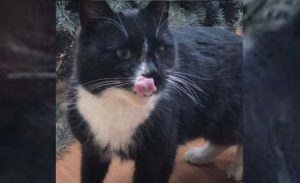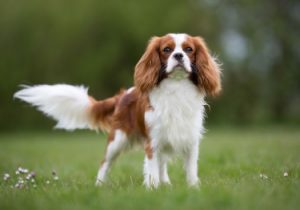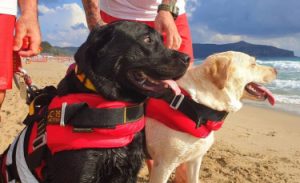Other names: Zapadno-Sibirskaïa Laïka, West Siberian Laika
The West Siberian Laika is a medium-sized dog, of strong but harmonious build, without the impression of heaviness, with well-developed musculature and bones. Males are clearly more massive than females. The gait of the West Siberian Laika is full of energy and ease, with a shortened trot alternating with the gallop.
<!–
–>
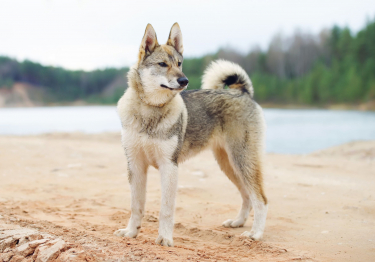
| Half-long | |
| Russia | |
| Average | |
| Triangular |
| Sex | Weight | Cut |
|---|---|---|
| Female | From 20 kg to 30 kg | From 52 cm to 58 cm |
| Male | From 20 kg to 30 kg | From 54 cm to 60 cm |
History of the breed
the West Siberian Laika is a dog native to the Urals and, as the name suggests, western Siberia. He is descended from the Russian hunting dogs Khanty and Manci , breeds also called Laïki Vogul and Ostyak. The first standards of the West Siberian Laika were established in 1947, then a new version was approved in 1952. The West Siberian Laika breed is now very popular with Russian hunters in Kamchatka and is highly regarded in other parts of the country.
It was definitively recognized by the FCI (Fédération Cynologique Internationale) on June 3, 1980. Its official FCI standard in force was published on October 13, 2010.
Physical features
His hair: dense, straight and hard to the touch. The outer coat is associated with an abundant, softer, woolly texture undercoat. Shorter and dense at the level of the head and ears, longer around the neck forming a ruff, abundant on the tail, but without fringe.
Its color: gray with brown shades, red with reddish shades, gray, red, fawn and all shades of reddish brown. Also pure white or with plates of any color mentioned above.
Its head: wedge-shaped, well proportioned in relation to the whole, larger in males than in females. The skull is quite long, the occipital protuberance pronounced, the superciliary arches slightly developed and the stop slightly marked. The nose is moderately large and black (lighter in white dogs), the muzzle is moderately pointed, the lips joined, the jaws well developed and articulated in scissors, the stop slightly marked.
His ears: V-shaped, high set, with pointed ends, erect and very lively.
His eyes: oval in shape, rather sunken, brown or dark brown in accordance with that of the dress, displaying a look full of determination and intelligence.
His body: robust, harmonious, slightly longer than high. The neck is muscular and long, the topline solid and slightly sloping, the withers well marked, the back muscular, quite broad and straight, the kidney short, the croup wide and slightly sloping, the chest slightly lowered to the point. of the elbow, wide and long, the bottom line raised.
Its tail: carried rolled up above the back or the hips.
Behavior and character
| Affectionate | |
|---|---|
| Calm | |
| Protective | |
| Independent | |
| Hunter | |
| Barks / howls |
Behavior with others
| Cohabitation with children | |
|---|---|
| Sociable with other animals | |
| Love strangers |
the West Siberian Laika is a dog with a balanced temperament . He is full of confidence and is very attached to his master , while showing himself to be particularly independent and above all wary of strangers. A versatile hunting dog , the West Siberian Laika shows vigor and determination when working on game, whether feathered or furry. When hunting, he also shows off his powerful flair.
The West Siberian Laika
is it right for you? Take the test!
Education
| Clever | |
|---|---|
| Obedient |
The West Siberian Laika is not the most cooperative of dogs, but it is a pleasant companion and an excellent hunting partner, benefiting from education (favoring positive reinforcement ) and quality socialization essential from its earliest days. young age. It is also necessary to teach him the recall very early .
Living conditions
| Suitable for apartment living | |
|---|---|
| Good for new masters | |
| Love it hot | |
| Love the cold |
the West Siberian Laika is aimed at experienced owners who know how to educate and manage this kind of dog with an independent character . Living in an apartment does not suit him; it is rather made to live in a house with a large garden , ideally close to nature (countryside, forest, mountain …).
Health
| Solid | |
|---|---|
| Ease of gaining weight |
the West Siberian Laika is a rustic and resistant dog. There are no particular health problems in this breed, nor any predisposition to any hereditary abnormalities.
Hypoallergenic breed
No
Litter size
Between 4 and 8 puppies
| Major concerns |
|
||
| Minor concerns |
|
| Suggested tests |
|
To protect you from these risks and insure your companion in the event of health problems, Woopets recommends an insurance for Laika dogs from West Siberia .

function showAssuranceForm () {var siteReferer = var id_race_association = ”; //console.log(id_race_association);success: function (html) {}});}document.addEventListener (‘DOMContentLoaded’, () => {$ (‘# assuranceModalBanner’). on (‘show.bs.modal’, function (event) {showAssuranceForm ();});});
Life expectancy
Minimum: 10 years
Maximum: 12 years
The life expectancy of a West Siberian Laika is, on average, between 10 years and 12 years.
Calculate the human age of your West Siberian Laika!
To choose… 1 year 2 years 3 years Four years 5 years 6 years 7 years 8 years 9 years 10 years 11 years old 12 years 13 years 14 years old 15 years old 16 years old 17 years 18 years old 19 years old 20 years 21 years old
Maintenance and hygiene
| Ease of maintenance | |
|---|---|
| Cost of maintenance | |
| Hair loss |
| Drool level | |
|---|---|
| Ease of grooming |
the West Siberian laika remains subject to one moult per year, or even two in females . This period can last more than 3 weeks and hair loss can be very severe. Dogs living in warm places can lose their hair all year round. Regular maintenance is therefore necessary to ensure the beauty and good condition of the coat and skin, as well as the well-being of the dog.
It is recommended to brush the dog at least once a week . During the moult, brushing is to be done several times a week in order to remove all the lost hairs. A bath is rarely necessary ; the West Siberian Laika can be bathed twice a year.
Its eyes, ears and pads should be carefully examined to detect and remove any debris. His teeth need to be brushed frequently to remove tartar build-up and the proliferation of bacteria. Finally, if they do not wear out naturally, its claws need to be cut. If you are new to this, it is recommended that you seek advice from a veterinarian or groomer.
Price and budget
Purchase price
Mini
Max € 500
1500 €
The purchase price of a West Siberian Laika is between € 500 and € 1,500.
Annual maintenance cost
Mini
€ 450 Maxi
650 €
The annual maintenance cost of a West Siberian Laika is between € 450 and € 650.
No name is currently proposed. Use our tool to find the name of your West Siberian Laika!
Food
The diet of the West Siberian Laika should be adapted to their level of physical activity, age and size.
Want the best for your dog?
Create tailor-made food for your West Siberian Laika
I discover !
PROMO -30% | Delivered to you!

Physical activity
| Athletic | |
|---|---|
| Energy level | |
| Potential to play |
the West Siberian Laika is an active and hard-working dog . He needs to spend and to be stimulated by the daily long walks, games and various exercises.
Competitions
| Classifications & Standards |
|
Others
| Master character <span class="btnTooltip qTip2" title="- Calm: the master must be gentle and know how to show patience. – Active: the owner must be energetic and dynamic to live in harmony with his dog. – Hyperactive: the owner must be stimulating and very restless to suit the temperament of his dog.”> |
Active |
|---|
We talk on the forum
Siberian husky puppy
Message from Michael Ronat
In my heart you will stay forever …. my Laika
Message from Joo
Laika …….. LEFT WITHOUT CARE FOR 5 YEARS!
Message from Joo
Laika of Lakutia
Guest message
Do you have a question about the West Siberian Laika?
Do not hesitate to ask Woopets visitors for advice on the forum!
FCI Information
FCI No.
306
FCI Group
Group 5: Spitz-type and primitive-type dogs
Recognized by FCI
Since 1980
</div




